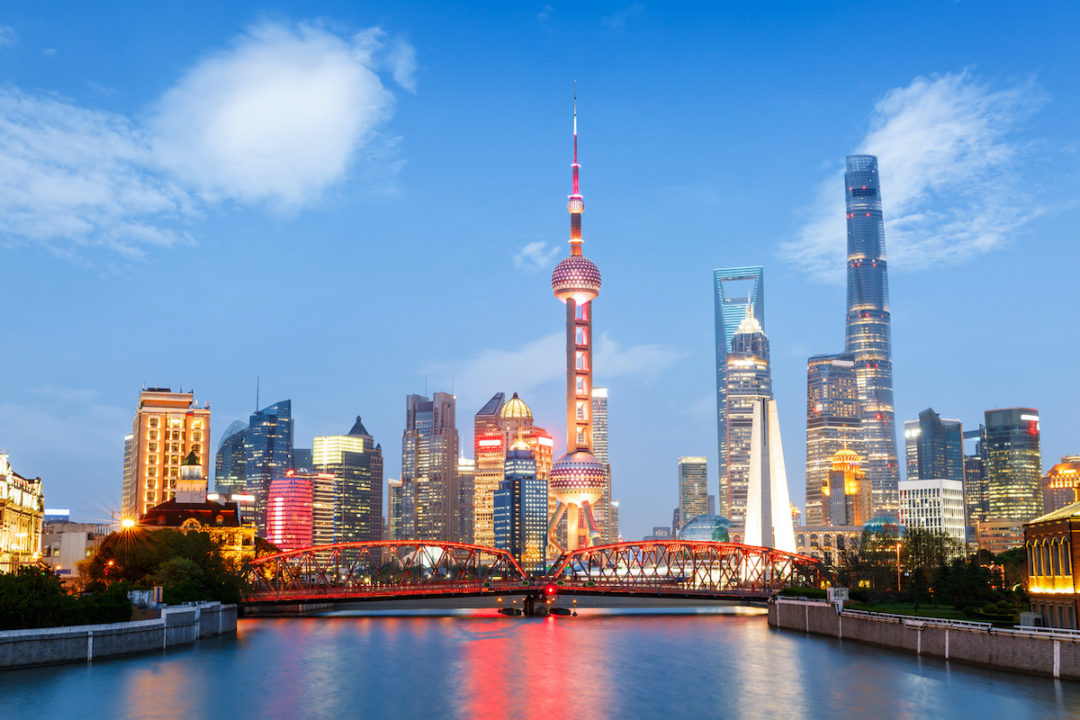
Shanghai, China. Photo: iStock.com/zhaojiankang
China’s Slowing Economy Is Putting a Damper on Its Plans for Global Dominance
China’s plan for global economic dominance has run into a snag.
It wasn’t that long ago that China appeared to be on the path of supplanting the U.S. as the world’s largest economy. China’s massive investments in infrastructure, both at home and abroad, coupled with its continued dominance as a manufacturer of consumer goods, were reaping huge rewards in terms of foreign capital flows and geopolitical influence.
More recently, a slowdown in the Chinese economy has clouded the picture. China’s industrial output increased by 3.7% in July of this year, compared with the same period in 2022, yet down from 4.4% in the previous month. Retail sales for that month rose by just 2.5% year over year, down from 3.1% in June, and well below the 4.5% rise predicted by economic experts. Meanwhile, the unemployment rate for workers between the ages of 15 and 24 has risen to a staggering 21.3%.
One of the biggest signs of trouble at the moment is China’s “crumbling” real estate sector, according to Sandeep Rao, head of research with Leverage Shares, a provider of exchange-traded products (ETPs). He says the sector is “saturated” with properties across China’s top 100 cities, many of which stand vacant or uncompleted. Land values have declined in all but three regions — Beijing, Shanghai and Guangzhou.
Beyond those urban and industrial centers, Rao says, “nearly all of China’s real estate is in deep crisis.” Rents are skyrocketing and homeowners are defaulting on their mortgages, resulting in many foreclosures.
The situation has grown so dire, Rao says, that China is considering easing migration restrictions within the provinces, to prop up the real estate sector in cities. That would be a sharp departure from the traditional ban on migration, with special visas required for living in the biggest urban centers.
Even as China encourages citizens in the provinces to buy properties locally, it’s promoting their movement to cities to bolster the flagging real estate market there. “The policies are running at odds with each other,” Rao says.
Along with the overbuilding of commercial and residential properties, China undertook huge investments in supporting infrastructure. Now, with many projects slowing or stopping altogether, unemployment is on the rise, and Chinese consumers are seeing a weakening of their buying power. At the same time, rising prices are placing increasing pressure on the nation’s middle class, on which the future health of the domestic economy relies.
China’s manufacturing sector has been struggling with similar pressures over the past decade. Rising factory wages for Chinese workers, along with the fallout from the ongoing U.S.-China trade war, are causing producers to consider diversifying sourcing away from China.
Rao predicts that the country will continue to play a major role in global manufacturing in years to come, although China, too, has seen the writing on the wall, making heavy investments in factories in Latin America and elsewhere to serve American and European markets.
Other parts of the world, especially India, are vying to challenge China’s dominance in manufacturing. But Rao doesn’t see India as a short-term threat. “It’s not going to happen for 20 years,” he says, adding that Indian government policies continue to be focused on domestic consumption. On the other hand, India’s reputation for technology innovation, and relatively strong protection of intellectual property, could accelerate its progress toward becoming a factory to the world. Apple, for one, is moving a portion of iPhone production from China to India.
China’s economy rests on the increasingly shaky foundation of a troubled banking sector. Rao believes China is “understating” its banking woes, caused by assuming huge amounts of bad debt from loans for property and infrastructure projects. China is also reported to be downscaling its ambitious Belt and Road initiative, a plan to bolster the movement and influence of Chinese goods worldwide through the building of infrastructure in some 150 countries.
The Chinese economy is projected to grow 5.4% in 2023, yet fall to 4.6% in 2024 due to continued weakness in the real estate market and external demand. Rao says it’s possible that China might be in for three to 10 years of stagflation, even as the government attempts to “restate the narrative to establish themselves as economic leaders in one way or another.”
